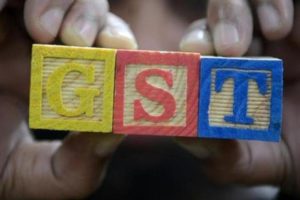
Ferrying goods across states may get quicker as the GST Council today decided to make rollout of all India electronic-way bill compulsory from February 1, two months ahead of the earlier plan.
“The rules for implementation of nationwide e-way bill system for inter-state movement of goods on a compulsory basis will be notified with effect from February 1, 2018. This will bring uniformity across states for seamless inter-state movement of goods,” the finance ministry said in a statement.
The decision comes after the Council, headed by finance minister Arun Jaitley, met earlier during the day via video conference, to decide upon the advancement of the implementation of e-way bill under the Goods and Services Tax (GST).
Under GST rules, ferrying goods worth more than Rs 50,000 within or outside a state will require securing an electronic-way or e-way bill by prior online registration of the consignment.
To generate an e-way bill, the supplier and transporter will have to upload details on the GST Network portal, after which a unique e-way bill number (EBN) will be made available to the supplier, the recipient and the transporter on the common portal.
The Council had decided that till such time as the national e-way Bill is ready, the states were authorised to continue their own separate e-way bill systems. The finance minister had said that system will be introduced in a staggered manner, with effect from January 1, 2018, adding that the document will be made applicable on an all-India basis from April 1.
“It was represented by the trade and transporters that this (lack of national e-way bill) is causing undue hardship in the inter-state movement of goods and therefore, bringing in an early all India system of e-way Bill has become a necessity,” the ministry said.
As a nationwide e-way bill system will be ready for implementation on a trial basis by January 16, transporters can start using this system on a voluntary basis from the same date, it said.
While the system for both inter and intra-State e-way bill generation will be ready next month, the Council decided that states may choose their own timings for implementation of the document for intra-state movement of goods on any date before 1st June, 2018.
“There are certain States which are already having system of e-way bill for intra-state as well as inter-state movement and some of those states can be early adopters of national e-way Bill system for intra-state movement also. But in any case, the uniform system of e-way bill for inter-state as well as intra-State movement will be implemented across the country by 1st June, 2018,” the statement said.
According to Abhishek A Rastogi, Partner, Khaitan & Co, the government should check the system thoroughly so that there is no disruption in movement of goods.
“The fair balance for mandatory inter-state e-way bill compliance from February 1 will have to be maintained. This compliance will reduce tax evasions but may pose some problems for businesses in movement of goods…while compulsory intra-state e-way bill compliance will happen from June 1, the government should be clear whether these provisions will be applicable for supplies which are out of the GST net,” Rastogi said.
Another expert said that the immediate call to advance the implementation of e-way bill reflects that some serious gaps in the system have been noticed by the government.
“The downfall in the revenue on account of GST, goods crossing the state borders unaccountable by few taxpayers, etc. could be the reasons for the early implementation of e-waybill as this form will forcefully make the taxpayer accountable in the absence of matching of invoices which is currently postponed,” Ansh Bhargava, Head Growth & Strategy, Taxmann said.
Source: MoneyControl.com





